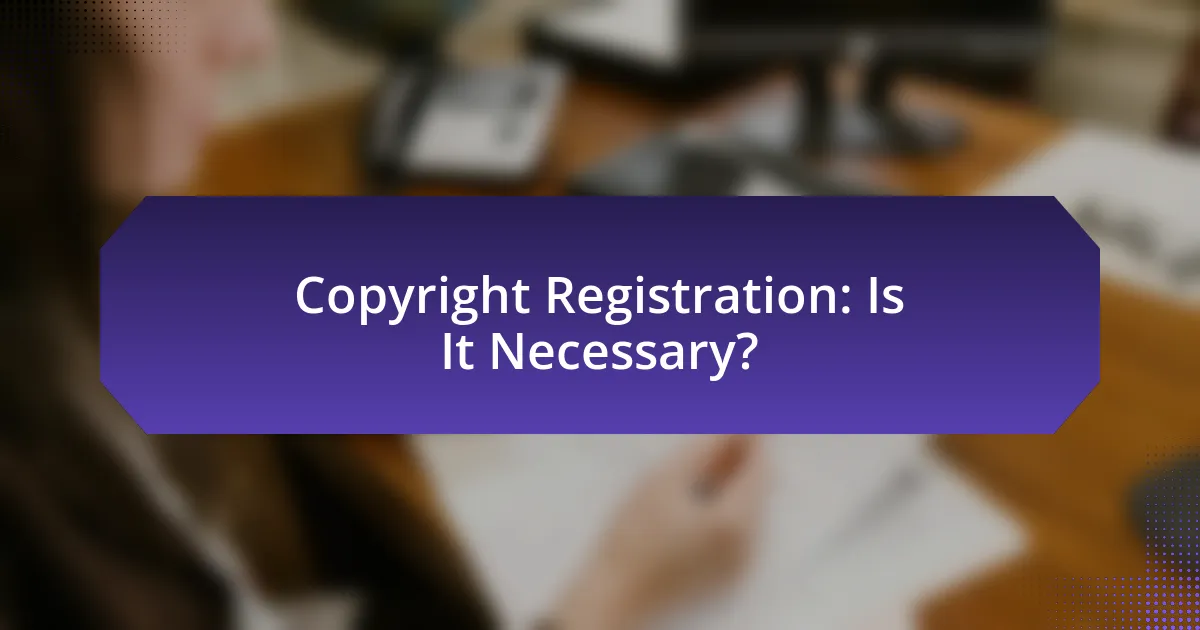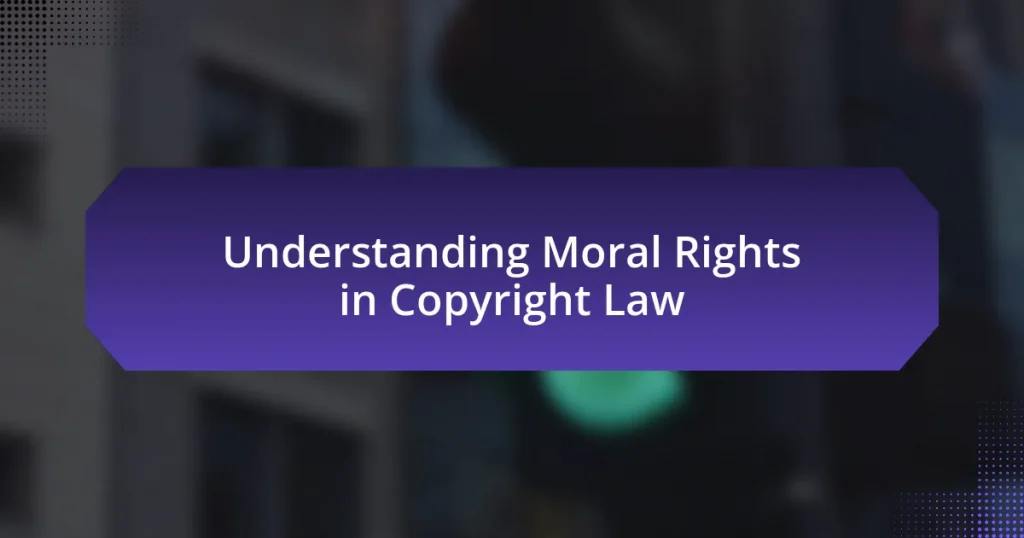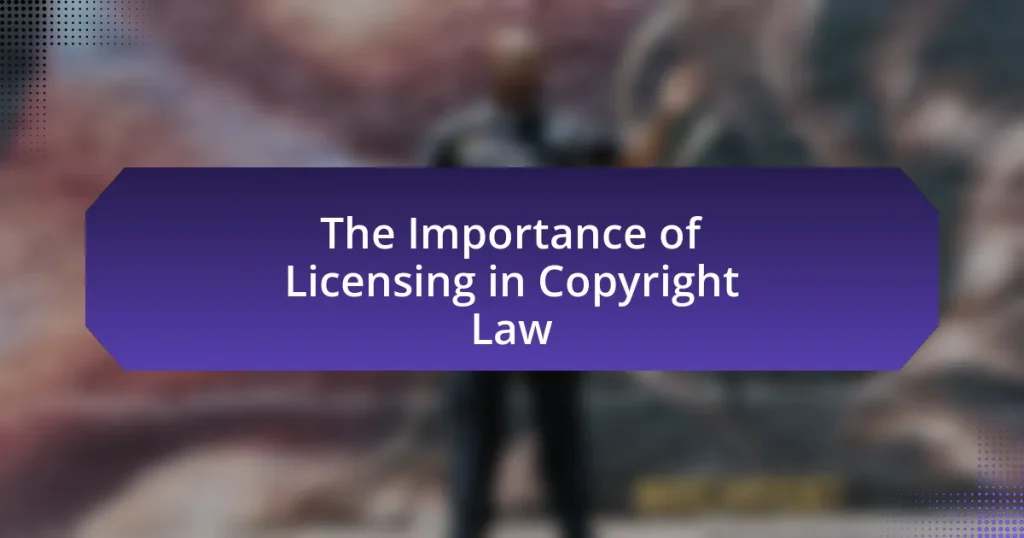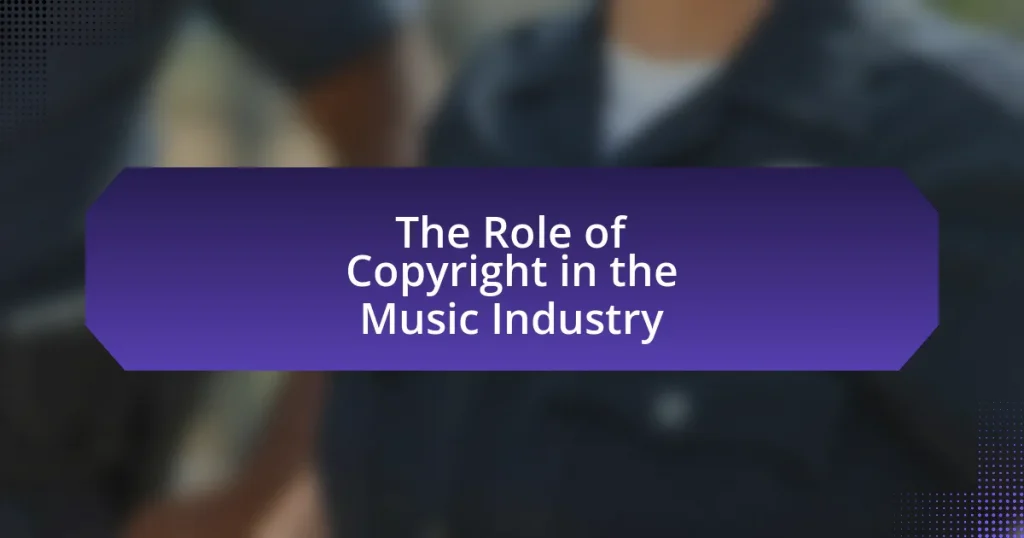Copyright registration is the formal process of recording a creator’s original work with a government authority, primarily the U.S. Copyright Office. This article outlines the significance of copyright registration, emphasizing its role in establishing legal ownership, enabling enforcement of rights, and providing access to statutory damages in cases of infringement. It details the types of works eligible for registration, the process involved, and the potential risks of not registering copyright. Additionally, the article discusses best practices for maintaining copyright protection and the steps to take if infringement occurs, highlighting the importance of registration in safeguarding intellectual property rights.

What is Copyright Registration?
Copyright registration is the formal process of recording a creator’s original work with a government authority, typically the U.S. Copyright Office. This process establishes a public record of the copyright claim and provides legal benefits, such as the ability to sue for infringement and eligibility for statutory damages. According to the U.S. Copyright Act, registration is not mandatory for copyright protection, but it is essential for enforcing rights in court, as it serves as prima facie evidence of the validity of the copyright.
Why is Copyright Registration important?
Copyright registration is important because it provides legal evidence of ownership and establishes a public record of the work. This registration allows creators to enforce their rights more effectively in case of infringement, as it grants the ability to sue for statutory damages and attorney’s fees under U.S. copyright law. Additionally, registered works are eligible for a presumption of validity in court, which strengthens the creator’s position in legal disputes.
What legal protections does Copyright Registration provide?
Copyright registration provides legal protections such as the ability to sue for infringement, statutory damages, and attorney’s fees. When a work is registered with the U.S. Copyright Office, the creator gains the right to enforce their copyright in court, which can lead to significant financial compensation if infringement occurs. Additionally, registered works are eligible for statutory damages, which can range from $750 to $30,000 per work, and up to $150,000 for willful infringement, as established under the Copyright Act of 1976. Furthermore, registration serves as prima facie evidence of the validity of the copyright in legal proceedings, simplifying the burden of proof for the copyright holder.
How does Copyright Registration differ from copyright ownership?
Copyright registration is the formal process of recording a work with a governmental body, while copyright ownership refers to the legal rights held by the creator of the work. Registration provides a public record of the copyright and can enhance the ability to enforce rights in court, as it establishes a presumption of validity and allows for statutory damages. In contrast, ownership exists automatically upon the creation of an original work, regardless of whether it is registered. Thus, while registration can strengthen the enforcement of ownership rights, it is not a prerequisite for ownership itself.
What types of works can be registered for copyright?
Copyright can be registered for various types of works, including literary works, musical works, dramatic works, choreographic works, pictorial works, graphic works, sculptural works, audiovisual works, sound recordings, and architectural works. These categories encompass a wide range of creative expressions, ensuring protection for original works of authorship fixed in a tangible medium. The U.S. Copyright Office specifies these categories, affirming that any original work that meets the criteria of fixation and creativity is eligible for copyright registration.
Which creative works are eligible for Copyright Registration?
Creative works eligible for Copyright Registration include original works of authorship fixed in a tangible medium of expression. This encompasses literary works, musical compositions, dramatic works, choreographic works, pictorial and graphic works, audiovisual works, sound recordings, and architectural works. The U.S. Copyright Office specifies that the work must be original and exhibit a minimal degree of creativity to qualify for registration.
Are there any limitations on what can be copyrighted?
Yes, there are limitations on what can be copyrighted. Copyright law protects original works of authorship, but it does not cover ideas, facts, or concepts. For example, while a specific expression of an idea, such as a novel or a painting, can be copyrighted, the underlying idea itself cannot. Additionally, works that are not fixed in a tangible medium, such as performances that are not recorded, are also not eligible for copyright protection. These limitations are established under the U.S. Copyright Act, which specifies that copyright does not extend to works that are in the public domain or that lack originality.
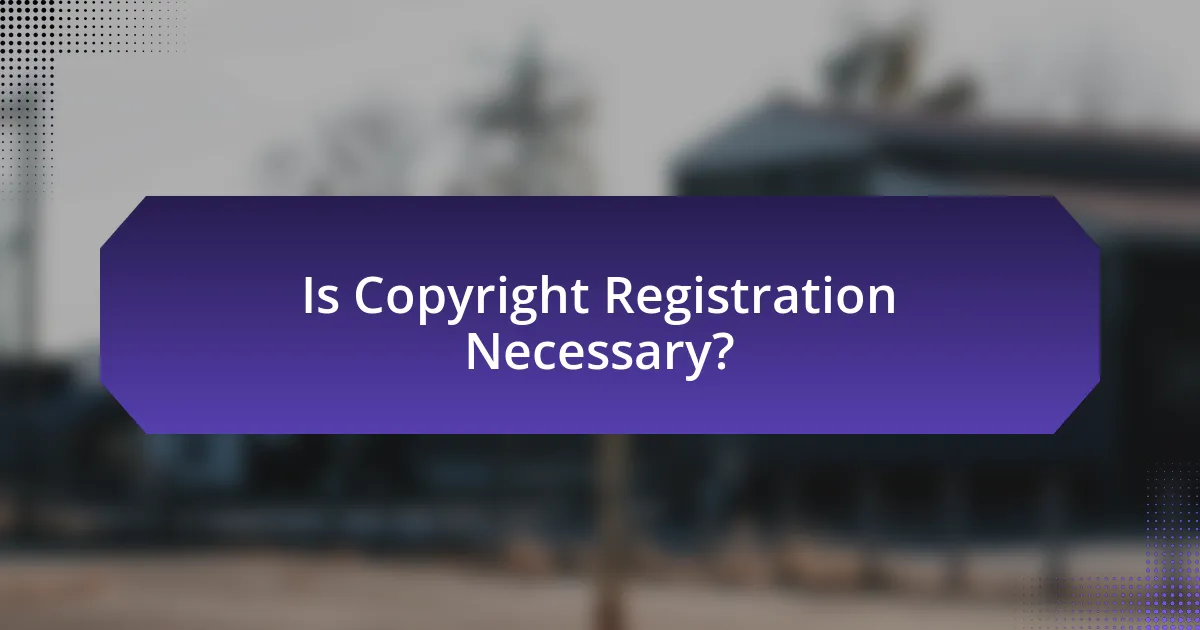
Is Copyright Registration Necessary?
Copyright registration is not legally necessary for a work to be protected by copyright, as copyright protection is automatic upon the creation of an original work. However, registering a copyright provides significant legal advantages, such as the ability to sue for statutory damages and attorney’s fees in case of infringement, which are not available without registration. According to the U.S. Copyright Office, registration is a prerequisite for filing a lawsuit for infringement, reinforcing the importance of registration for enforcing rights.
What are the advantages of registering copyright?
Registering copyright provides legal protection for original works, allowing creators to enforce their rights against unauthorized use. This registration serves as public notice of ownership, which can deter infringement and strengthen legal claims in court. Additionally, registered copyright holders can seek statutory damages and attorney’s fees in litigation, which are not available for unregistered works. According to the U.S. Copyright Office, registration is a prerequisite for filing a lawsuit for infringement, further emphasizing its importance in protecting intellectual property.
How does registration enhance enforcement of copyright rights?
Registration enhances enforcement of copyright rights by providing a public record of ownership, which serves as prima facie evidence in legal disputes. This means that registered works are presumed to be protected under copyright law, making it easier for copyright holders to prove their rights in court. Additionally, registration allows copyright owners to pursue statutory damages and attorney’s fees in infringement cases, which are not available for unregistered works. According to the U.S. Copyright Office, registration is a prerequisite for filing a lawsuit for infringement, thereby reinforcing the legal standing of the copyright holder and facilitating the enforcement process.
What financial benefits can arise from Copyright Registration?
Copyright registration provides financial benefits such as the ability to enforce rights in court, which can lead to monetary damages and attorney fees if infringement occurs. Registered works are eligible for statutory damages, which can range from $750 to $30,000 per work, and up to $150,000 for willful infringement, as established by the Copyright Act of 1976. Additionally, registration can enhance the marketability of creative works, allowing creators to license their content more effectively and potentially generate revenue through royalties.
What are the potential drawbacks of not registering copyright?
Not registering copyright can lead to significant drawbacks, including the inability to enforce rights in court. Without registration, creators may face challenges in proving ownership, which is crucial for legal protection against infringement. Additionally, unregistered works do not benefit from statutory damages or attorney’s fees in litigation, making it more difficult and costly to pursue legal action. Furthermore, registration provides public notice of ownership, which can deter potential infringers; without it, creators may struggle to establish their rights against unauthorized use.
How does lack of registration affect legal recourse?
Lack of registration significantly limits legal recourse for copyright holders. Without registration, individuals cannot file a lawsuit for infringement in the United States, as registration is a prerequisite for legal action under the Copyright Act. Furthermore, unregistered works do not qualify for statutory damages or attorney’s fees, which are available only to registered works. This means that unregistered copyright holders may face higher costs and challenges in proving damages in court, as they must rely on actual damages rather than the more favorable statutory damages. Thus, the absence of registration severely restricts the ability to enforce copyright rights effectively.
What risks do creators face without Copyright Registration?
Creators face significant risks without copyright registration, primarily the inability to enforce their rights against infringement. Without registration, creators lack the legal presumption of ownership and may struggle to prove their authorship in court, making it difficult to pursue legal action against unauthorized use of their work. Additionally, unregistered works are not eligible for statutory damages or attorney’s fees in infringement cases, which can deter creators from seeking justice. According to the U.S. Copyright Office, registration provides a public record of the work and is a prerequisite for filing a lawsuit in the United States, underscoring the importance of registration for legal protection.
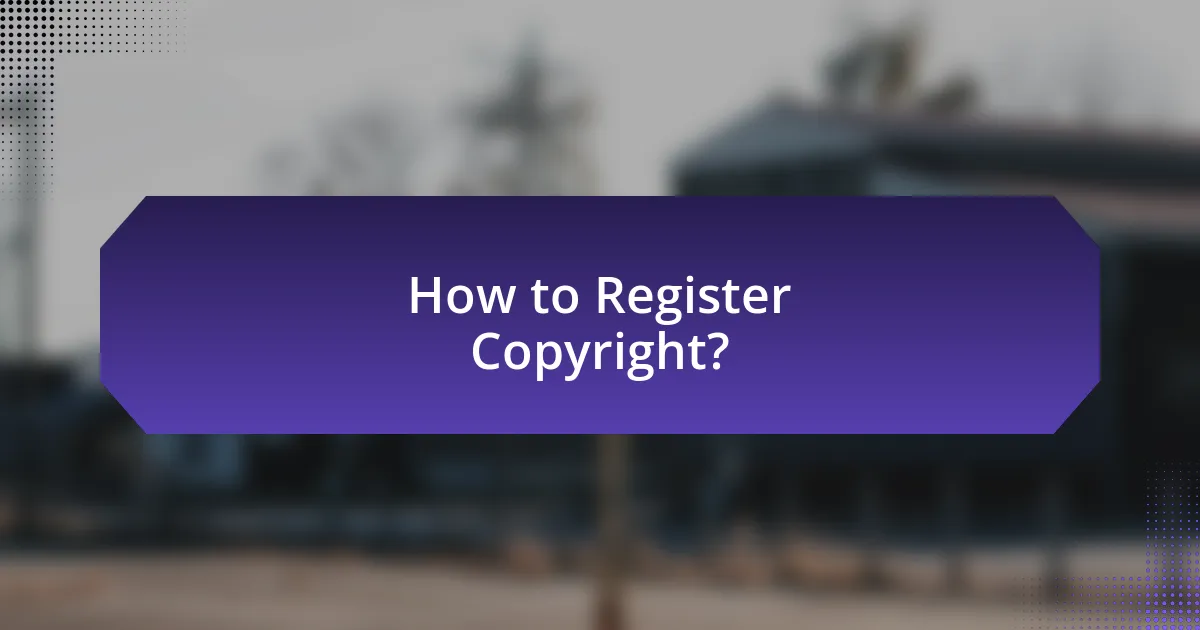
How to Register Copyright?
To register copyright, an individual or entity must complete an application with the U.S. Copyright Office, which includes providing information about the work, such as its title and the author’s name. The applicant must also submit a copy of the work being registered and pay the required filing fee. Registration is essential as it establishes a public record of the copyright and is necessary for pursuing legal action against infringement. According to the U.S. Copyright Office, registration can be completed online or via mail, and it is recommended to register works promptly after creation to secure legal protections.
What is the process for Copyright Registration?
The process for copyright registration involves several key steps. First, an individual or entity must complete a copyright application form, which can typically be done online through the U.S. Copyright Office website. Next, the applicant must submit a copy of the work being registered, which can vary depending on the type of work (e.g., literary, musical, visual). After submitting the application and the work, the applicant must pay the required filing fee, which varies based on the type of registration. Once the application is processed, the Copyright Office will issue a certificate of registration if the application is approved. This process is essential as it provides legal evidence of ownership and can enhance the ability to enforce rights in case of infringement.
What forms and fees are required for registration?
To register a copyright, the required forms include the appropriate application form, which varies based on the type of work being registered, such as literary, visual, or performing arts. The fees for registration typically range from $35 to $85, depending on the type of application and whether it is filed online or via paper submission. For instance, the U.S. Copyright Office charges $45 for a standard online application for a single work. These forms and fees are essential for the legal protection of creative works under copyright law.
How long does the registration process typically take?
The registration process for copyright typically takes about three to six months. This timeframe can vary based on the volume of applications received by the copyright office and the complexity of the application submitted. According to the U.S. Copyright Office, processing times can fluctuate, but they aim to complete most registrations within this period, which is supported by their published processing statistics.
What common mistakes should be avoided during registration?
Common mistakes to avoid during registration include providing inaccurate information, failing to submit required documentation, and neglecting to review the application before submission. Inaccurate information can lead to delays or rejection of the application, as the U.S. Copyright Office requires precise details about the work and its authorship. Additionally, missing documentation, such as a signed application or payment, can result in processing issues. Finally, not reviewing the application can lead to overlooked errors that may complicate the registration process. These mistakes can significantly hinder the effectiveness of copyright registration, as highlighted by the U.S. Copyright Office’s guidelines on proper submission practices.
How can errors in the application affect copyright protection?
Errors in the application can significantly undermine copyright protection by leading to the rejection of the application or limiting the scope of protection granted. When an application contains inaccuracies, such as incorrect author information or misidentified works, the copyright office may deem the application invalid, resulting in a lack of legal protection for the work. Additionally, errors can create ambiguity regarding ownership and rights, which can complicate enforcement and lead to disputes. For instance, a study by the U.S. Copyright Office indicates that incomplete or erroneous applications are a common reason for delays and denials in copyright registration, highlighting the importance of accuracy in the application process.
What are the best practices for ensuring a successful registration?
The best practices for ensuring a successful registration include providing accurate and complete information, submitting the application in the correct format, and paying the required fees. Accurate information minimizes the risk of rejection due to discrepancies, while using the correct format ensures compliance with registration guidelines. Additionally, timely payment of fees is crucial, as failure to pay can result in delays or denial of the application. According to the U.S. Copyright Office, incomplete applications are a common reason for delays, highlighting the importance of thoroughness in the registration process.
What are the best practices for maintaining copyright protection?
The best practices for maintaining copyright protection include registering your work with the U.S. Copyright Office, using copyright notices, and keeping detailed records of your creation process. Registering with the U.S. Copyright Office provides legal advantages, such as the ability to sue for statutory damages and attorney’s fees in case of infringement. Utilizing copyright notices, such as the © symbol followed by the year and the owner’s name, serves as a public declaration of ownership and can deter infringement. Additionally, maintaining thorough documentation of your work’s creation, including drafts and correspondence, can help establish ownership and the timeline of creation, which is crucial in legal disputes.
How can creators monitor and enforce their copyright rights?
Creators can monitor and enforce their copyright rights by utilizing digital tools, legal frameworks, and proactive strategies. Digital tools such as content identification systems, like YouTube’s Content ID, allow creators to track unauthorized use of their work online. Legal frameworks, including the Digital Millennium Copyright Act (DMCA), provide mechanisms for creators to issue takedown notices against infringing content. Additionally, proactive strategies such as registering works with copyright offices enhance legal protection and facilitate enforcement actions. According to the U.S. Copyright Office, registration is crucial as it establishes a public record of the copyright and is necessary for filing a lawsuit for infringement.
What steps should be taken if copyright infringement occurs?
If copyright infringement occurs, the first step is to document the infringement by collecting evidence such as screenshots, URLs, and any relevant communications. Following documentation, the copyright owner should send a cease-and-desist letter to the infringer, clearly stating the infringement and requesting that they stop using the copyrighted material. If the infringer does not comply, the copyright owner may file a Digital Millennium Copyright Act (DMCA) takedown notice with the hosting service or platform where the infringement is occurring. If these steps do not resolve the issue, the copyright owner can consider pursuing legal action by consulting with an attorney who specializes in intellectual property law. These steps are essential to protect the rights of the copyright holder and to seek remedies for the infringement.
